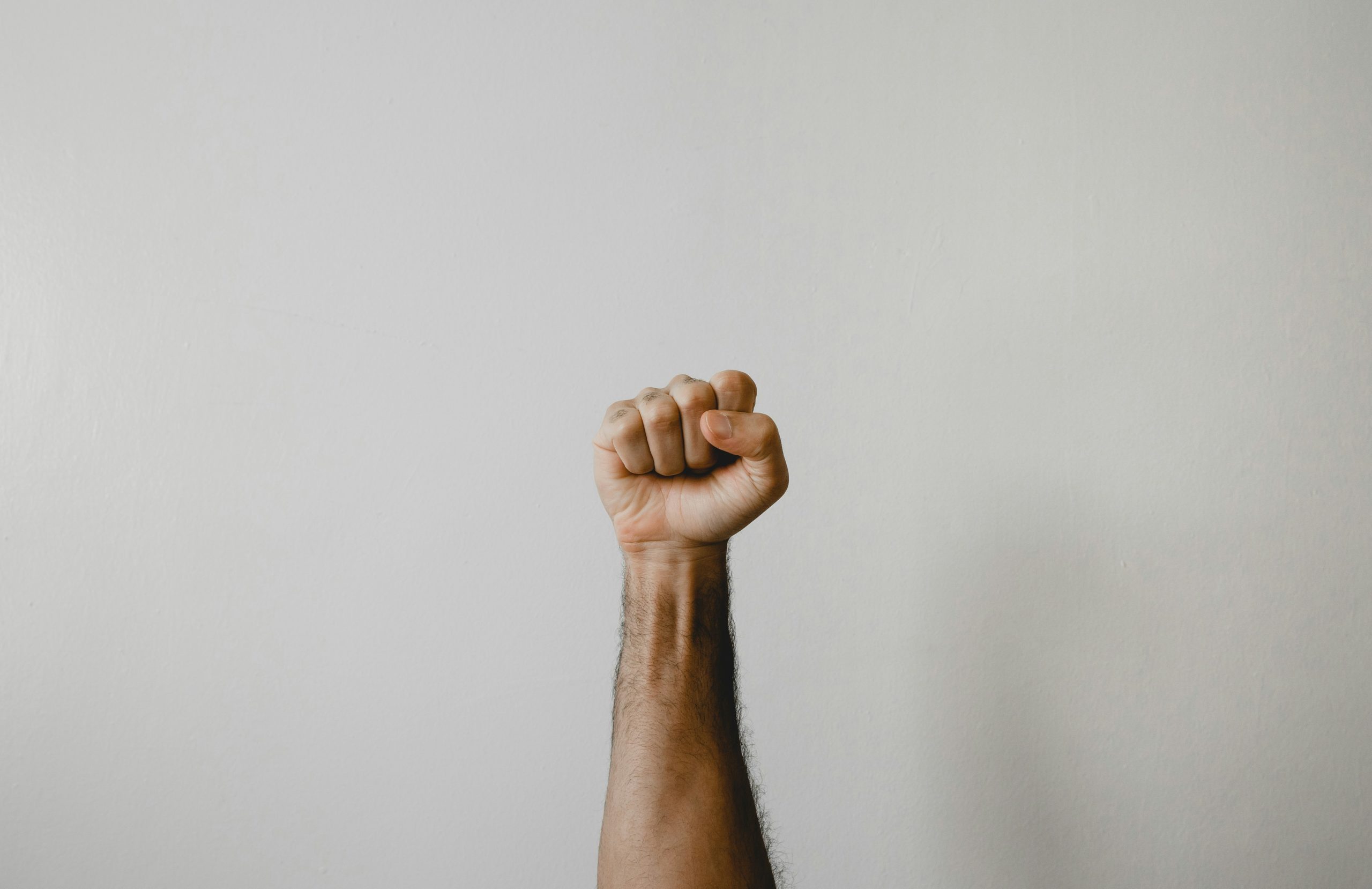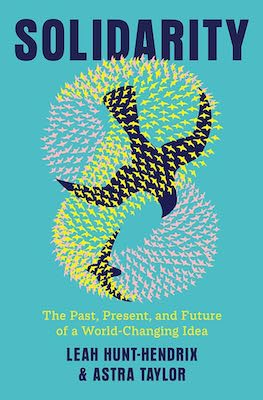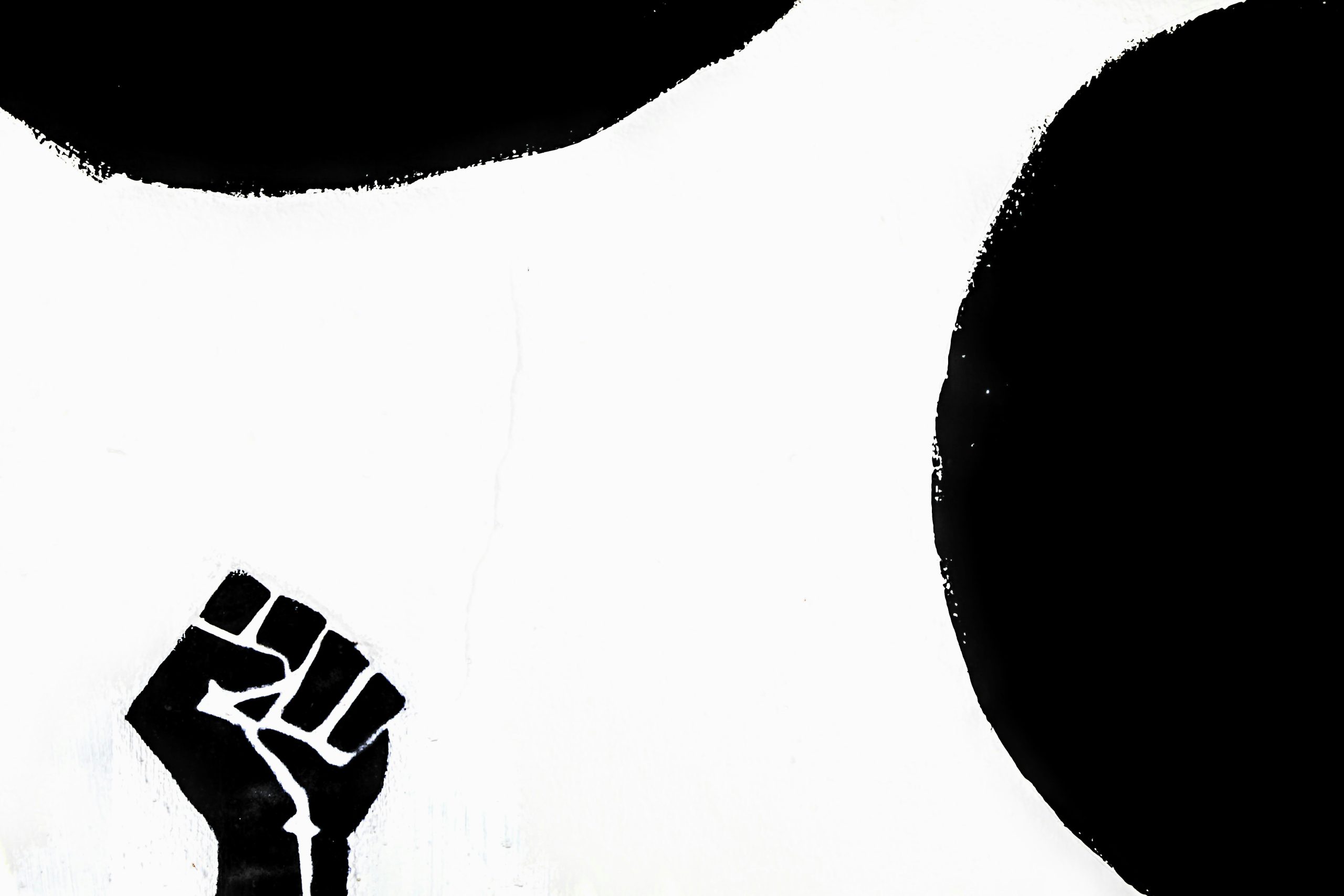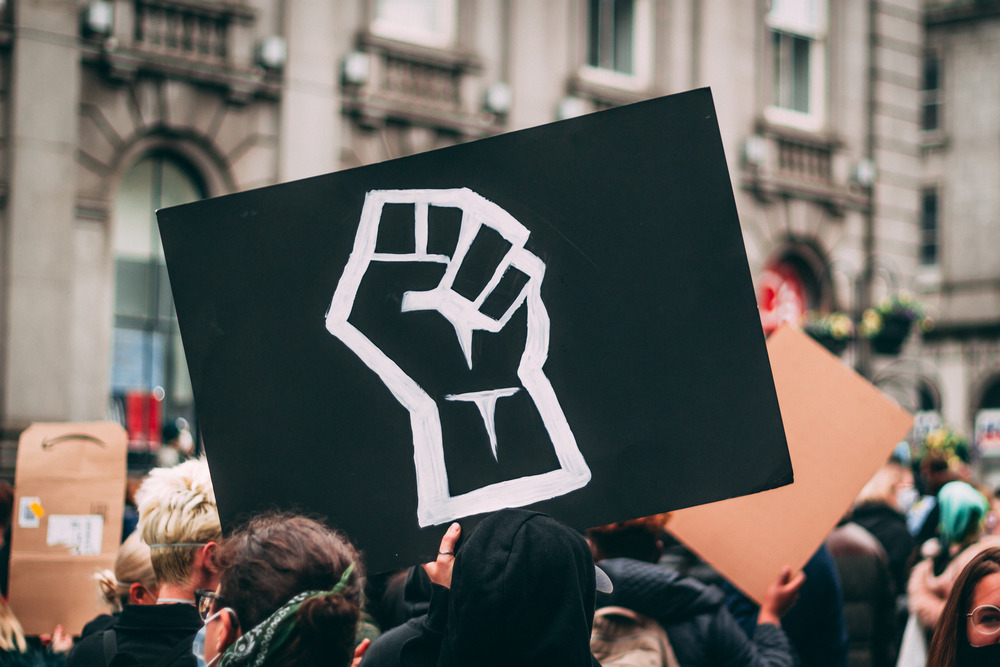interviews
Transformative Solidarity Can Empower Ordinary People in This Terrible Time
Leah Hunt-Hendrix and Astra Taylor discuss solidarity as a potent political movement in America and where we go from here

“Impediments to unity are so common and copious,” write Leah Hunt-Hendrix and Astra Taylor, “they appear as an ordinary, even intractable, aspect of life.” But for the authors of the new book Solidarity: The Past, Present, and Future of a World-Changing Idea, division is not some spontaneous or natural thing. Rather, it requires the strategic and sustained pitting of one group against another. Or, as they see it, the division and animosity that defines our political and social landscape is a product of the active effort to sabotage solidarity.
The central mission of their book is to find a way to overcome division by cultivating its opposite: solidarity. To do so, the authors look to the past, finding there a rich history of seeing solidarity as a political reflection of our absolute dependence on one another. They also look to the history of social movements to offer readers examples of moments when people from all walks of life have built power together. These examples are important because Hunt-Hendrix and Taylor do not want to overcome divisiveness simply for its own sake, nor do they want anything to do with erasing the differences among us. Rather, they believe that solidarity—the type that respects and retains our differences—can transform society. Their book leaves readers with a real sense that solidarity is the only way out of the mess we’re in. As they write, “Either solidarity forever or our time is up.”
We spoke by Zoom about the history of solidarity, how the right uses “reactionary solidarity” to divide people, how we can counter it, and whom they hope to reach with their book.
Lynne Feeley: You say in the introduction that we’ve entered a “new period of instability and change” and that “we sit at a moment of significant opportunity and threat.” I was wondering if you could say a bit about how you see solidarity as an answer to the threat and opportunity of the moment.
Leah Hunt-Hendrix: There are a number of reasons. On a really macro level, we’re writing this in the midst of feeling like neoliberalism is coming to a crisis point. Both of us started our activism work during the period of financialization, the global justice movement, Occupy Wall Street, economic inequality. So it feels like we’re at a moment of paradigm shift, and either it could become worse, or we could enter a new paradigm that is more just and equitable. The neoliberal era was created—we have the power to create the economic systems that we live in. So what is the intellectual history that we need to create new paradigms? If neoliberalism is really grounded in a concept of freedom and the individual—good things—but went to an extreme, can we bring back the idea of solidarity as we think about a next economic paradigm? So that’s like a macro level.
Then on a more visceral, current political level, obviously we are in the midst of a crisis of democracy, with the election of Trump once and maybe twice. We’ve been thinking about the crisis of democracy as a crisis of solidarity. We let ourselves get so fractured, and we’ve succumbed to these “divide and conquer” tactics and politics—it might mean the end of the American democratic experiment. So can we survive those forces of division by identifying and resisting them?
Then a third piece—even more micro—is on the left itself. The left itself has, since the 1800s and 1900s, always been caught up in sectarianism. We’ve seen that today, too. How do we, as progressives, think about our own coalition? How can we work together to create change and not let ourselves be divided from each other?
Astra Taylor: And how do we not let ourselves be divided without adopting a simplistic idea of unity, which is something we really belabor in the book. We’re not after unity for its own sake.
How can we work together to create change and not let ourselves be divided from each other?
—Leah Hunt-Hendrix
I think moments of breakdown can be moments of breakthrough, and it’s telling that right now, we speak of crises, or poly-crises, or intersecting crises, and nobody blinks an eye. But Leah and I take seriously the threats that are put upon us. We take seriously the threat of climate change. We take seriously the threat of intensifying white supremacy. We take seriously the threat of authoritarianism. But we’re also pretty adamant in the book that a kind of centrist liberalism won’t get us out of the mess we’re in and that you do need to have a kind of robust, progressive politics counter to that. And I think you build that progressive politics by speaking to people’s actual experiences of the crises, experiences of oppression, and turning that into solidarity.
So, that’s where it’s a moment of peril, but it’s a moment of possibility because through the alchemy that is organizing, we can turn a lot of this terrible shit into power for ordinary people.
LF: One of the things you are both making me think about is the point you make about solidarity having to be cultivated. On the one hand, you write about solidarity being a reflection of an inherent interdependence. Yet, on the other hand, you write about solidarity having to be actively cultivated through organizing. This duality is in relation to another duality, which you trace in the book, between cohesion and upheaval.
AT: There’s a strong tradition of thinking of solidarity as social cohesion. But we’re also very invested in and inspired by the vision and the fighting spirit of solidarity that you see all through the labor movement. So solidarity, in our definition, isn’t just about cohesion and keeping things how they are. It is very much about transformation. That’s why we felt compelled to name the kind of solidarity we’re after “transformative solidarity.”
As organizers, I think what we aim to do is to create that conflict and upheaval, that transformative energy to bring about a new consensus, a new cohesion. We don’t want to be debating whether trans people are people, or whether we should have a habitable environment. We just want that to be the new common sense, and then the process can go from there. So I think cohesion and upheaval for us are not at odds. They’re part of the inherent process of societal evolution.
LF: Could you define the difference between reactionary versus transformative solidarity? I do think the key intervention of the book is this idea that just as solidarity must be cultivated, division also has to be cultivated and mobilized and maintained and reinvented over again. So I was wondering if you could tell us a bit about reactionary solidarity, how you see it, how it’s different from transformative solidarity.
LHH: I think there is a notion that solidarity can just be sort of mundane and neutral. But on the other side of that, we see reactionary solidarity as exclusionary and really pitting outsiders against insiders to solidify the “we.” You just see that constantly in politics. Often there’s an external enemy—like China or Russia—but often it can be internal: immigrants, people of color.
We see transformative solidarity as an alternative to that. It’s like deciding that we have something in common, that we have a common fate, a need for each other, and deciding to stick together to overcome whatever obstacles are in the way. There is still a polarization, but it’s a much broader sense of the “we.” I think Occupy is a good example of the 99% versus the 1%. 99% of us have a lot in common, and the only people we don’t have a lot in common with are the people who are dividing us for their own profit and for their own benefit. But even they will benefit from a society where there is a stronger social safety net.
So transformative solidarity doesn’t say that these people are enemies that must be demolished or annihilated. It asks: how can we improve conditions for everyone, even the 1%, who right now have to build fortresses around themselves and have private security to fend off the pitchforks? I think the difference between reactive and transformative solidarity is, in part, how we relate to the concept of the other or the outside.
AT: Transformative solidarity is bridging out and trying to build a more inclusive “we” but with the aim of also changing the social structures. We are also channeling that fighting spirit of solidarity that you see historically in the labor movement. Reactionary solidarity is based more on a politics of scarcity and is more about splintering the coalition. But it offers people a real sense of belonging.
Through the alchemy that is organizing, we can turn a lot of this terrible shit into power for ordinary people.
—Astra Taylor
I’m tempted to say that in transformative solidarity, identity is a doorway, and in reactionary solidarity, identity is a destination. Reactionary solidarity is a white, male, working class that does not want to share its gains or a hyper-aggressive nationalism. We did wrestle a lot with where identity fits into all of this. Solidarity is not identity, but I think identity is often the portal through which we have or do not have solidarity with other people and groups. It’s something we couldn’t ignore because it’s so fundamental, but the question of whether it’s a doorway or a destination is key.
LF: I was really interested in the genre and intended audience of the book. I noticed that, in my reading, it moves around various rhetorical modes or even different kinds of study. We’ve been talking about the intellectual history piece, the social movement history, there’s some personal narrative there in how you came to the project and your work in different movements. There’s also organizer strategy. Could you talk a bit about how you were able to fold all of these approaches into the book, or why you did so?
AT: We genuinely wrestled with the theme and were learning as we wrote. We had to figure out: what do we think about solidarity? What is the intellectual schema that we’re going to use? And so, for me, one of my mottos as a writer is to take the reader along on that journey of discovery. And the book kind of does that–it is a document of our investigation and our learning.
I think the mix of different registers and voices is an attempt to hold the reader. Because if it’s all just dry intellectual history we’re gonna only reach a very select audience. And there’s a very select audience for a “how to organize” strategy guide–and Leah and I know those people very well, they’re our comrades, we organize with them. But wouldn’t it be neat to get some liberals reading an “how to organize” guide, who might otherwise never pick that up?
I think the personal elements are important because, as we say in the introduction, solidarity is always invested. It’s not an abstract concept. It’s messy, it’s rooted, it takes a stand, it’s positional. It felt like we had to name our positions and where we’re coming from.
Every writer wants to reach readers, but I think we really do want to put solidarity on the American agenda, as something that’s critical to getting us out of these intersecting crises but also as something that can be institutionalized. When we say we’d love to see someone running on a solidarity state platform, we mean it. Let’s create solidarist policy feedback loops instead of ones that demean and demoralize and divide people. We want to see these ideas taken up and not just put into practice but put into power structures.
LF: It seems like the book is really interested in moments where this almost happened–or these glimmers of the solidarity state. These moments seem to be seeded in the book as moments of real promise and possibility that can be recovered now as examples that we might take a lot from and model on. I’m thinking of, for example, the Community Action Programs and the Black Panthers, the National Welfare Rights Organization, and the citizens’ assemblies on abortion in Ireland.
AT: “Glimmers” is a really good word to describe them. How do you tell the stories of things that broke through but then were shut down? The assemblies in Ireland are ongoing, and I think are a really positive, interesting example of creating forums where citizens can debate across difference and create new kinds of alliances and new space to find common ground. So I find that example really interesting and engaging.
In terms of the Citizen Action Programs, the minute I heard about them, I was like what? The U.S. government was funding, at scale, these organizing initiatives as part of its War on Poverty? In fact, as its premier program. It’s such an interesting example of how the state can create space for citizen engagement and the kind of transformative solidarity we’re talking about. Transformative solidarity on both levels: holding space for people to start organizing but also enabling those folks to then pressure the state to create change.
Transformative solidarity is bridging out and trying to build a more inclusive ‘we’ but with the aim of also changing the social structures.
—Astra Taylor
One thing that we discussed was that we didn’t want all of the examples to be from Sweden and Finland and other Nordic democracies. It was really important to us that we really scoured American history because we don’t believe that it’s impossible here. We think it’s totally possible. The problem is there’s far more investment at the level of the state in reactionary solidarity and division. We wanted to hew close to American examples not out of parochialism but because Americans are so quick to be like, “Well, nothing good can happen here.”
LHH: We are interested in asking, how do we think of each other as citizens and agents and protagonists, and what policies would support that mindset? We can think of mundane things like Vista and AmeriCorp, where there’s much, much more demand to participate in these programs than there is money for them or positions in these programs. Imagine if we had a service program where, instead of going to the army, you did community service or a WPA-like program, working on trails and climate-related things. The state could fund these things, which could be productive, could be good for the economy, good for society, and also could create a feedback loop of educating each other about the different communities that make up America and our different responsibilities to each other.
AT: As imperfect and flawed as they are, and even though they’re factories of student debt, which I now spend my life fighting, public universities are kind of that, right? That’s part of why we’re seeing an intense attack on universities (especially since the war on Gaza started) and this insistence from the right that what universities are doing is dividing people by bringing up issues of race and diversity and equity and inclusion. They’re like, “Why are people going to these schools and turning out liberal?” Because that’s actually where young folks get out of their bubbles, are introduced to new ideas, encounter difference—and it is, imperfectly, state subsidized. So you see a little tiny thing that could be a critical building block of the solidarity state. And the right wing is going after it. I think we are of the position that it’s really important to protect what we have and build on it instead of acting like you could just create utopia ex nihilo. We have to protect what we have and gain new ground.









